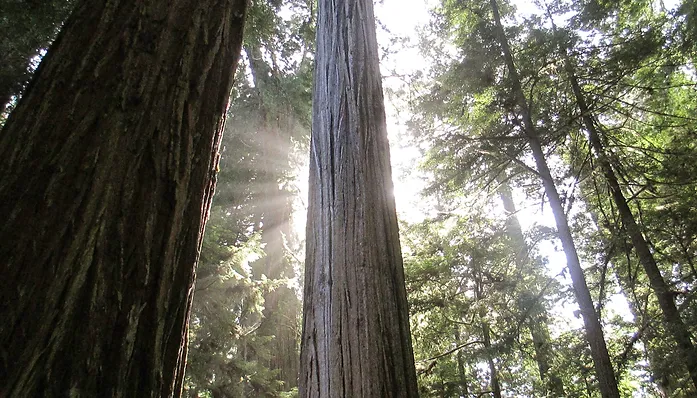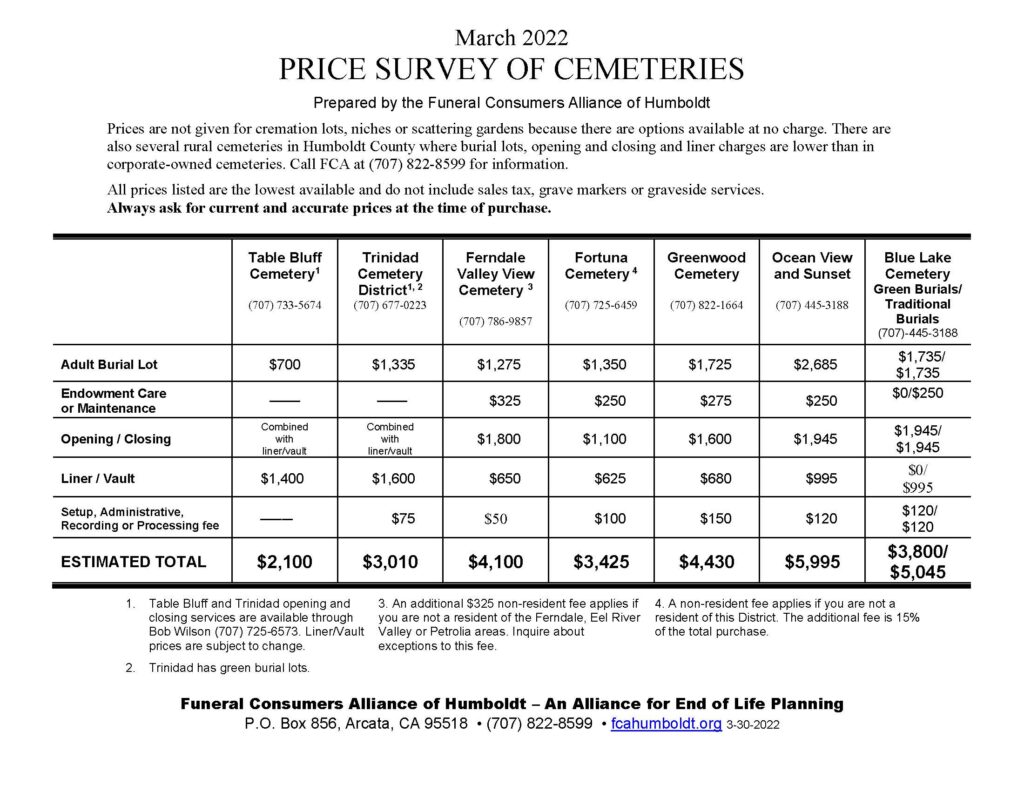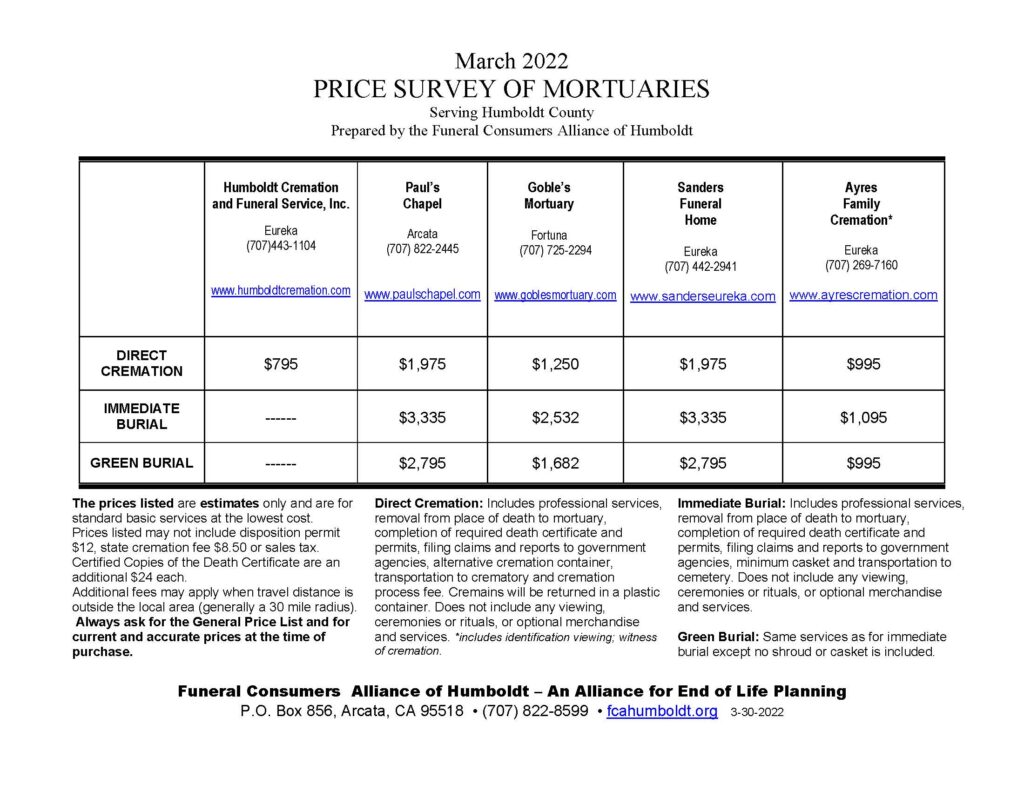
Funeral Consumers Alliance of Humbolt
FCA Humbolt Incorporated in California in 1965 AS ?______. Its purpose was to educate its members and the public about State and Federal funeral and cemetery regulations and to assist in providing access to simple, dignified and economical end of life services. In 2024 the members voted to fold into Life’s End Options (LEO). Long-serving director Nancy Ortiz was one of the founding members of LEO.
FCA Humbolt's last price surveys were done in 2022


Cemeteries in rural Humbot
By Aisha Coriell
I recently had a conversation with my mother about her end-of-life wishes. She stated her wish is to be buried on her land out in the mountains. Well, we all know we can’t just bury someone on the “back forty,” but having this conversation inspired me to learn more about what might be the next best option. While it may not be legal for her to be buried on her property in the mountains, maybe it would be an option to be buried in the small rural cemetery located closer to her home? For example, there is a small rural cemetery on the side of the road on the way out to her property.
After contemplating it, I thought of two other small cemeteries close to her home. I wanted to learn more about rural cemeteries. Is there public access to rural cemeteries? Is it possible for new gravesites to be added to rural cemeteries? I did an Internet search, read through the California health and safety codes pertaining to death and cemeteries, and emailed back and forth with the Cemetery and Funeral Bureau of California.
Most rural cemeteries are family cemeteries created years ago. Family cemeteries are located on family-owned land and public access would require explicit permission from the landowner. Many laws and regulations that now exist may not have been in place when most of the family cemeteries started. It is possible that when a family cemetery was created, wooden markers were used to distinguish one gravesite from the next. Over time, wooden marker may have disintegrated. It may be difficult to determine the boundaries between gravesites, leading to the risk of disturbing existing remains.
When looking for information about a rural cemetery in Petrolia, I came across a website that stated the public is permitted to visit the cemetery. It is called the Pioneer Cemetery and the first burial was in 1857. According to the website, there haven’t been any new plots available since 1978 but there are potential plans to start a new cemetery so residents of Petrolia can have an option closer to home.
Among the many rules and regulations that exist today, one barrier to creating a new family cemetery is that “burial must be in an established cemetery, so you will need to check with the county registrar for local zoning laws to see about establishing a cemetery for home burial.” According to a 1939 statute, six or more bodies buried in one place – not the cremated remains of six – constitutes a “cemetery” (Final Rights by Slocum and Carlson, 2011).
Is it possible for new gravesites to be added to existing rural cemeteries? I found that that depends on a number of factors. The sites would need to be well marked so as not to disturb existing remains. According to Ellis M. Kjer from the Cemetery and Funeral Bureau in California, “The County will not give you a permit until you have written permission from the land owner and you can provide such to the Office of Vital Records in Eureka.” A Permit for Disposition would have to be obtained and approved by the public health department.
In the end, the official whose job is to approve the Permit for Disposition has the final word. In addition, I wonder what would happen to access if the ownership of the land changes hands? For those who live in rural areas of Humboldt County and wish to be buried, the options appear to be (1) going through the process of obtaining proper documentation and permission to access a site on a family owned cemetery close to home, or (2) purchasing a site at one of the established cemeteries in the more populated areas of Humboldt.
